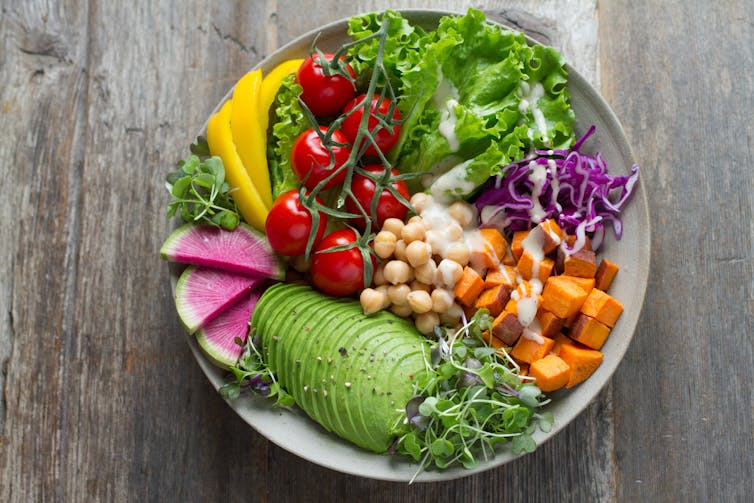Food
#FoodPorn: People are more attracted to social media content showcasing fatty foods

Life outside our living rooms has been in short supply since the beginning of the COVID-19 pandemic, so it’s no surprise that people have increasingly turned to producing and consuming social media posts that focus on food. With limited access to our favourite restaurants, cafés or fast-food joints, social media has become a safe way for people to get their culinary fix.
But what is it about videos of food that engages users and generates the most likes, comments and shares?
Our recent investigation, published in the Journal of Consumer Psychology, focused on the nutritional makeup of dishes depicted on social media. We examined the recipes and ingredients for hundreds of Facebook videos from Buzzfeed’s Tasty profile and found that caloric density can positively influence social media engagement.
Interestingly, not all nutrients are created equal when it comes to engagement. Rather, the ones that people can readily see, like saturated fats, may be more responsible.
Eating with your eyes
The COVID-19 pandemic has fundamentally altered our relationship with food: what we’re eating, where we’re eating, why we’re eating the way we are and even when we’re eating.
Not surprisingly, people are also spending more time on social media since the start of the pandemic. Taken together, the pervasive use of social media has also changed how people are exposed to food.
With more than 400 million posts tagged #food and 250 million tagged #foodporn on Instagram at the time of this article’s publication, social media users are inundated with visual displays of food.
Perhaps most notably, Buzzfeed’s Tasty has become the world’s largest digital culinary network, amassing more than 100 million followers on Facebook and over a billion monthly views.
Given the ubiquity of food media online, understanding the specific characteristics that shape engagement is of critical importance to several groups: content producers looking to tailor media towards viewer preferences; advertisers seeking to increase marketing impact; and health advocates interested in helping consumers make better eating choices.
Nutrition and social media engagement
Humans are hard-wired to seek foods with characteristics that the brain instinctively recognizes as valuable. Seeing calorie-dense foods like those high in fat content (like burgers, pizza and cookies) typically precedes pleasurable consumption, so it is natural that humans visually attend to food.
Finding and eating calorie-dense foods typically makes people feel good, releasing dopamine and stimulating pleasure centres of the brain. This suggests that nutritional content can be broadly gauged by a dish’s appearance and that the simple exposure to calorie-dense meals can make people feel good.
When it comes to influencing online behaviours, the link between feeling good and digital engagement is well documented. Positive content is more likely to go viral and social media content that makes consumers feel good increases the likelihood of being liked, commented upon and shared. Taken together, visual exposure to food media that looks calorie-dense — as opposed to calorie-light — should drive social media engagement.
More fat = more engagement?
Our research examined the recipes and ingredients for hundreds of Facebook videos from Buzzfeed’s Tasty using a text-processing algorithm. We found that caloric density can positively influence social media engagement. Several follow-up experiments suggest that positive affect, the extent to which we feel good after visual exposure to calorie-dense foods, helps explain the connection.
Interestingly, it seems that not all nutrients are created equal when it comes to engagement. Rather, the ones that people can readily see, like saturated fats, may be more responsible.
Saturated fats are prevalent in butter, cheese, meats and oils, and are known to give foods their juicy, chewy and creamy sensory experiences.
Our findings align with a particular approach to food photography, where adding an artificial sheen with WD-40 can make food look more plump, moist and juicy.
These findings raise an interesting question: Is it possible to make healthier foods, like vegetables, more appealing by applying visual characteristics associated with fattier foods by, for example, coating them with a sheen?
Identifying these visual characteristics of nutrients can better inform strategies to increase engagement with more health-conscious food media content.

Importance of amplification
But why does social media engagement even matter?
Social media platforms use rank-ordering algorithms to prioritize and boost content that receives more engagement. Simply posting content online does not mean it will be viewed. Rather, it is engagement with content that amplifies reach and serves content to a wider audience. If content featuring unhealthy or calorie-dense foods is more likely to receive engagement, it is also more likely to reach more people.
Overall, our research offers some initial insight into how the nutritional composition of food media influences social media engagement. As consumers’ preoccupation with digital food media continues to grow, especially during pandemic lockdowns, understanding the factors that increase engagement with this content is crucial, with public health implications.
Not only does nutrition influence what people eat, but this research suggests that it may also shape social dynamics in terms of what people share with others, ultimately influencing and normalizing what others eat.
Next time you like, comment on, or share a food video on social media, consider what it is about the food you find so appealing.
Ethan Pancer, Associate Professor of Marketing, Saint Mary’s University and Matthew Philp, Assistant Professor, Marketing, Ryerson University
This article is republished from The Conversation under a Creative Commons license. Read the original article.





















